Talk with our local travel specialist who can help organize your trip.
Packing List for Trekking in Bhutan - Things To Consider While Packing For Bhutan Trekking
The crux of a successful and comfortable trek is to pack the right necessities and keep it simple. Depending upon the place and time of travel, the packing list can be different. In common, all trekkers experience the stress of having to decide what to bring to a trek and what not to carry. Carrying unnecessary items in your backpack can only add to the burden throughout your trek and packing less can mean that you might have to make do with what you have.
The packing list for trekking in Bhutan is no less. Bhutan is a Himalayan kingdom in the southeast, so in most high-altitude treks, the packing checklist is similar. To make your trekking plan hassle-free, we have prepared the ultimate packing list for trekking in Bhutan.
Check out our Packing List For Trekking In Nepal to help you with planning your adventure.
Table of Content
Things To Consider While Packing For Bhutan Trekking
- Check with your airliner for the information regarding baggage limit before packing.
- For long treks at a higher altitude, you will have to take along all the cold weather gears with you but in short treks below 4000m, you can skip them.
- Understand that you will be accompanied by a horseman who will carry your duffle bag and heavy luggage from one camp to another. So, you will have to carry a light day pack with you for the day. A single horse carries up to 30 kg weight; 2 trekkers backpack. Thence, carry no more than 15kgs bag.
- A common day pack might include only the essentials such as snacks, camera equipment, headlamp, an outer layer, sun protection, essential documents, money and a water bottle.
- Bhutan is a conservative nation, meaning that they are very particular about the way people dress. Mostly, if you are visiting a cultural and religious landmark, then you need to be fully clothed showing minimum bare skin. Hence you will have to carry decent long-sleeved shirts, long pants, and closed shoes. Also, don’t forget to remove your shoes and hat before entering temples and monasteries.
- Although at times hot and humid on the valley floors, weather in Bhutan can change drastically during the evening and nighttime, so make sure to carry warm clothes.
Recommended Read: Bhutan Trekking Season - When is the best time to trek Bhutan?
Where to travel next?
Get help from our travel specialists for holiday ideas that matches your interests.
Ultimate Packing Checklist
Clothing
Most of the time, locals are seen wearing their traditional dresses as Bhutan is a conservative country. Visitors are not generally required to follow the same, but it is socially essential to cover your skin while visiting Dzongs and Lhakhangs. Also, it is essential to carry some warm clothes along with some t-shirts if you are trekking at an altitude below 4000m. Above that mark, you are required to carry warm but breathable clothes mostly to cut the chill of the Himalayan wind.
Base Layer
Fabrics like Capilene or Merino wool are best for keeping you insulated while wicking away the sweat during long hikes.
- Long-sleeve T-shirts (2)
- Half sleeve t-shirt (1)
- Long underwear pants (2)
- Underwear (5-7)
Mid Layer
It helps to regulate temperature both in hot and cold climates with ease.
- Fleece Jacket/ Down Jacket
- Long sleeve shirts
- Sweatshirt
- Fleece pants
- Trekking pants (2)
- Shorts (1)
Outer Layer
It protects you from harsh weather conditions such as snow and rain. IT should be breathable and waterproof.
- Long poncho
- Waterproof pants
- Waterproof jacket with hood
Headwear
It is essential to protect your head against the strong Himalayan winds in the evening and night time. Make sure to remove any headwear while entering the religious sites.
- Wide Brimmed Hats/Cap (helps to protect from the sun)
- Woolen Hat (best for colder weather)
- Balaclava (to protect the face and head against the harsh cold wind)
- The scarf around the neck
- Sunglasses to protect eyes against sun rays and snow blindness
Handwear
Since the weather can be cold in the winter season and generally during all seasons at a higher altitude, your hands might get cold.
- Lightweight gloves (below 4000m altitude)
- Insulated wool mittens (for colder weather)
Footwear
Proper footwear is focal for comfort during trekking. You might have to walk through snow, in rain and also for short hikes. Keep in mind to buy shoes that fit you properly. Do not buy too big shoes which might cause your heel to clip or too small giving you blisters, because the most important thing in trekking is comfort.
- Hiking shoes: Carry a high-quality hiking boot with ankle support which is preferably light and waterproof.
- Hiking Socks: Carry enough warm socks made of Capilene or wool that does not smell pungent after a long walk
- Pair of sandals or tennis shoes: It can be used while lounging in the evening in camps, guest houses or homestays
- Gaiters: to protect shoes against snowy and rainy weather
Hygiene and Personal Care
Bhutan is a developing country so you will be heading to many remote areas which are not endowed with all the necessities. It is vital to carry personal care and hygiene items with you for your daily use.
- Soap, shampoo, conditioner and hair gel (in small travel size containers)
- Hairbrush, compact mirror, hair ties
- Ziplock bag to keep your used items
- Deodorant, body powder
- Face wash
- Toothbrush and small toothpaste
- Sunscreen with high SPF to protect against scorching sun and regular lotion
- Toilet paper, small towel, Facial tissues, wet wipes
- Lip balm (essential to cure dry lips caused by the cold weather)
- nail clippers, Q-Tips
- Small Sewing kit and safety pins
- Feminine hygiene products
- Laundry detergent (to wash your clothes on long treks)
Health Kit
You will not find many hospitals and clinics in the rural hills and villages. Hence you need to be prepared for any small injury or health complication that might occur during your trek.
- Ibuprofen, Paracetamol, Aspirin
- Band-Aids/plasters
- Antiseptic, burn ointment, anti-histamine cream
- Insect repellant
- Throat lozenges
- Diarrhea medication
- Gauze Band-Aid, tape and disinfectant
- Ace bandage
- Diamox (prevent altitude sickness)
- Multi vitamins
- Malaria pills
- Cough drops
- Water Purification Tablets
- Hand sanitizer
- Personal prescription drugs with doctor’ recommendation
Where to travel next?
Get help from our travel specialists for holiday ideas that matches your interests.
Documents And Money
At all times in the trek, it is important to carry your essential documents and money with you in your day pack. Carrying cash is essential in all parts of Bhutan, because it is not with ease that you will find ATMs to use your credit or debit card.
- Ngultrum cash currency (Bhutan’s official currency, can be used to buy souvenirs, give tip to the driver, helper, horseman, and guide, and to buy snacks or eat at restaurants and cafes)
- International Passport with a validity of 6 months
- Bhutan Visa
- Insurance Certificate with policy number and SOS contact number
- Vaccination (if recommended)
- Medical history (in case of major illness)
Electronics
You will be amazed by the vibrant traditional dresses, amazing architectural dzongs, views of mountains and hills, lifestyle of the people and more. To keep these memories intact, you can carry your photography essentials. In many rural areas in Bhutan, particularly while camping you will not have electricity; hence you need to be prepared with alternatives.
- Phone (with the help of your guide, you can buy a sim in Bhutan)
- Headphone
- Tripod
- DSLR Camera with battery charger
- Extra Memory Card
- Power Bank/ Solar power bank
- Plug adapter (mostly type D/F/G power sockets used)
Bags
To keep all your items, you need to have multiple bags. Particularly during camping treks, you might require additional bags to keep your sleeping supplies.
- Sleeping bag: sleeping bags are required during camping treks. Although you are provided the sleeping mats and pillows in your package, you will have to carry your own sleeping bag. These banks can be rented in a local trekking shop in Paro town. Buy sleeping bags rated 32-degree Fahrenheit/ 0 degree Celsius or colder.
- Duffle Bag: In the duffle bags you will place all the essentials needed during the evenings and nights. In addition, you can attach sacks for your dirty laundry and shoes. Don’t forget to cover the duffle bag with waterproof and use small locks for them. It will be carried by the horsemen who will take it to your night stop.
- Day Pack: Day packs are essential bags that hold only the most necessary things required during the day for trekking. You will be carrying this pack, unlike the duffle bag. Use a waterproof cover for your day packs. In general, it contains your documents, money, outer layer, required toiletries, water bottle, snacks, personal medication, rain poncho, phone, camera, and a few essential trekking equipment and electronics.
How To Pack Your Backpack
Trekking equipment
Trekking equipment will be essential to make your trek easier. They might be needed anytime during short as well as long treks.
- Trekking poles/stick (you can buy it from the local trekking store in Bhutan)
- Headlight/ Torchlight with a spare battery
- Small Swiss Army Knife
- Medium-sized water bottle (500ml/1000ml)
Optional Items
Apart from the items mentioned above, if you have some space left, then you can opt to carry a few of these optional items.
- Traditional dress (to be worn while visiting Dzongs and Lhakhang)
- Woolen Cardigan
- Swimwear (for treks with a stop at the hot springs)
- Earplugs (for an undisturbed good night sleep)
- Sock liners
- Journal and Pen (to jot down the memories)
- Banners/flags
- Umbrella
- Map of Bhutan, Bhutan Guide Book, Bhutanese language book
- Novel or Kindle
- Lighter/matches
- Personal comfort food (energy bars, nuts, raisins, favorite snacks)
- Playing cards or board games
Conclusion
Packing all the above-mentioned checklist in alignment with the trekking destination, days and season, ensures that you go to Bhutan, well prepared without the hassle of forgetting anything. Most vital above all are the base, mid and outer layer apparel, trekking equipment and gears, documents, money, health kit, hygiene and personal care kit ad electronics. If you have packed all of these, then you are fully covered. If you are planning to explore Bhutan without any complication and dilemma of deciding what to wear in Bhutan or trekking in Bhutan what to pack, then feel free to contact us for expert advice from our professional trekking crew.
- Written by: Naba Raj Amgai
Updated: Jan, 4, 2021

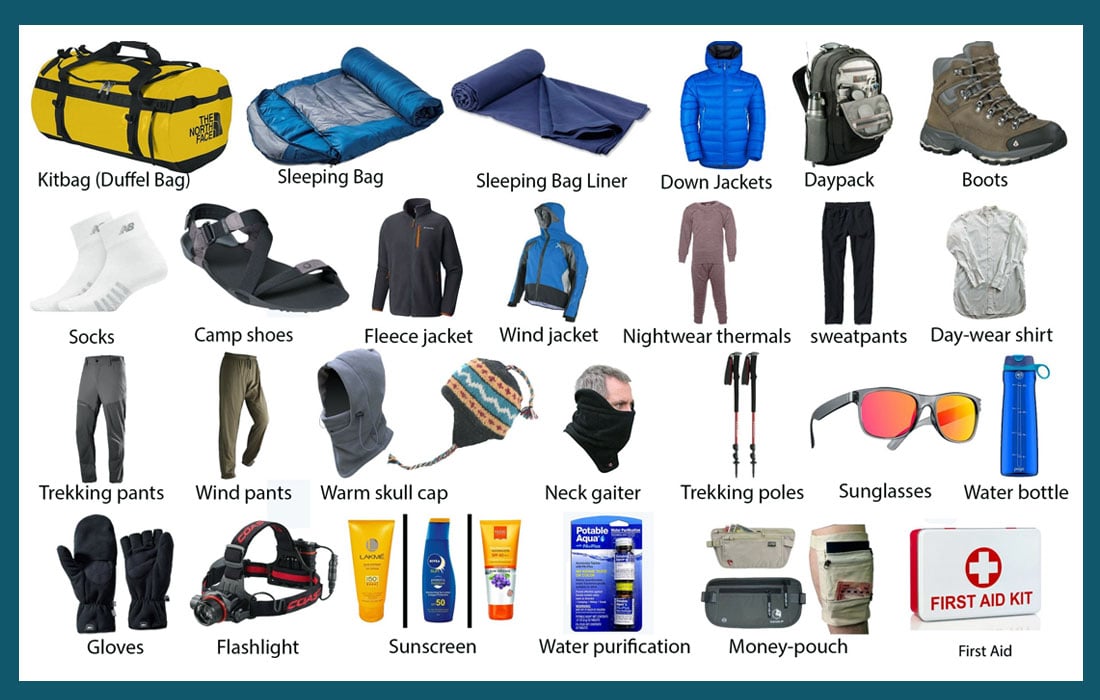


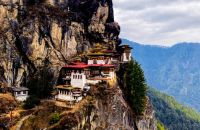
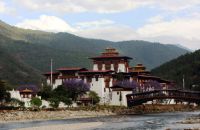
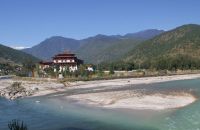

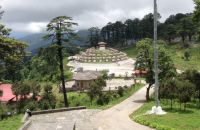
















Recent Comments